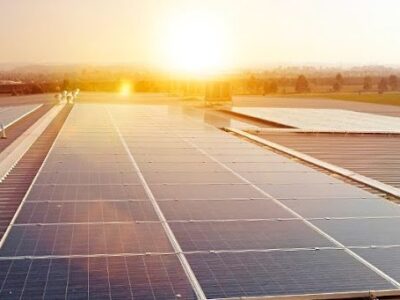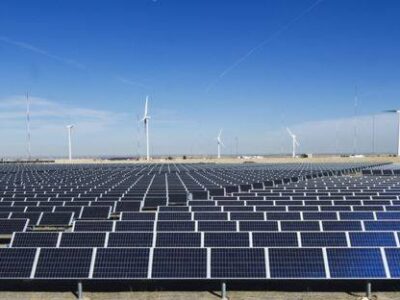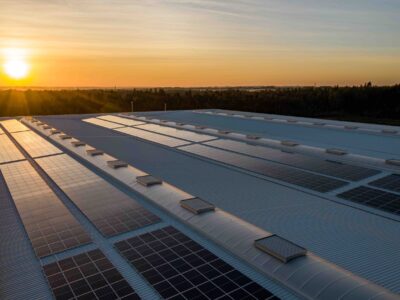Far up in the northernmost corner of the United States, just 200 miles from the Arctic Circle is not where you’d expect to find a solar farm, not with the sun shining just four hours a day in the winter, but turns out, that’s exactly where you’ll find Golden Valley Electric Association. They’re keenly aware of the rhythm of the seasons, but they’re also feeling the squeeze of a changing climate and switching to solar is one way they plan to offset the thaw. With solar power costs on a steady and rapid decline, folks are getting adventurous in developing some of the world’s most unlikely and yet undeniably effective solar farms.
Venture outdoors in Alaska on a cold spring day and you might find yourself blinded by the light, which is a good thing. In a BBC story covering Renewable IPP, a solar company that owns the state’s largest solar farm, 50 miles north of Anchorage, chief operating officer Sam Dennis said: “We get a lot of reflective light from the snow in the early spring months. This helps increase output. Last year in March our best day generated an output of 800 kilowatts.” It’s a glass half full sort of a dance, and with nearly 85% of Alaska’s land at some level of permafrost, Renewable’s Willow farm sees less than six hours of daylight during the winter months. But come summertime, they make bank, with a projected annual output of 1.35-megawatt hours, lighting up 120 average homes. This may seem a small number, but for Alaskans who pay almost twice as much for electricity than the rest of the United States, solar power means big savings.
Renewable CEO Jenn Miller told BBC: “Solar viability is a function of two things: solar resource and electricity prices,” and contrary to popular belief, Alaska is actually on average, a sunny place to be. Miller and her founding partners met over a shared interest in renewable energy, while working, ironically, in the oil industry. They saw an opportunity in solar, with costs falling steadily for the past 40 years, it’s now more affordable than fossil fuels. From 2018 to 2019 the number of homes in Alaska with solar installations went from 33 to 163. Renewable CFO Chris Colbert said: “This means we not only have a positive environmental impact, but a competitive, positive economic impact.” Launched in January, Renewable’s Willow farm boasts 11 rows of panels, nine 133 kW rows, and two smaller 70kW rows from the 2018 pilot project whose costs came in on target after just eight months. The company moves fast. They successfully financed nearly half of the $1.5 million Willow farm project through the Alaska Energy Authority’s Power Project Fund loan program after approaching the state-owned authority with their loan proposal just six months prior to activation.
In 2010, the Alaska legislature set a non-binding goal for 50% of the state’s electricity to be generated from renewable and alternative energy sources by 2025. Alaska logged 5,628 clean energy jobs in 2019 and with five years to meet that goal, the playing field is wide open. A wide open space is exactly what the Renewables team is on the hunt for now, planning their next farm to cover 50 to 100 acres with energy enough to power 1,000 homes. They’re considering their carbon footprint as they go. “Our solar farm pays back the carbon footprint associated with manufacturing and construction, to include tree clearing, in three to five years,” said Miller. With a solar farm life span of thirty years, that’s a pretty good bargain to strike.
Up in Fairbanks, Tom DeLong, board chairman of GVEA, is working to balance the changing seasons of solar farming. “In Alaska, we don’t generally use air conditioning in homes, so in the summer months, when production is at its highest, actual kilowatt hours sales are at their lowest. And in December, when people are using more energy for heat, more electricity, we get next to nothing from our panels. We make more in one day in June than we make for the entire month of December.” Come December, snow will be piled high on the panels and the farm will go into relative hibernation until February, when it’s actually worth shoveling off the icy snow and soaking up the sun again. GVEA and Renewable alike have discovered it depends on what angle you take. According to Miller, 45 degrees is just right for Willow farm panels to catch the best rays and let that snow slide off naturally. In Alaska, it’s all in how you look at it and these pioneers in the Northern parts are proving the quest for solar is a viable one indeed.





